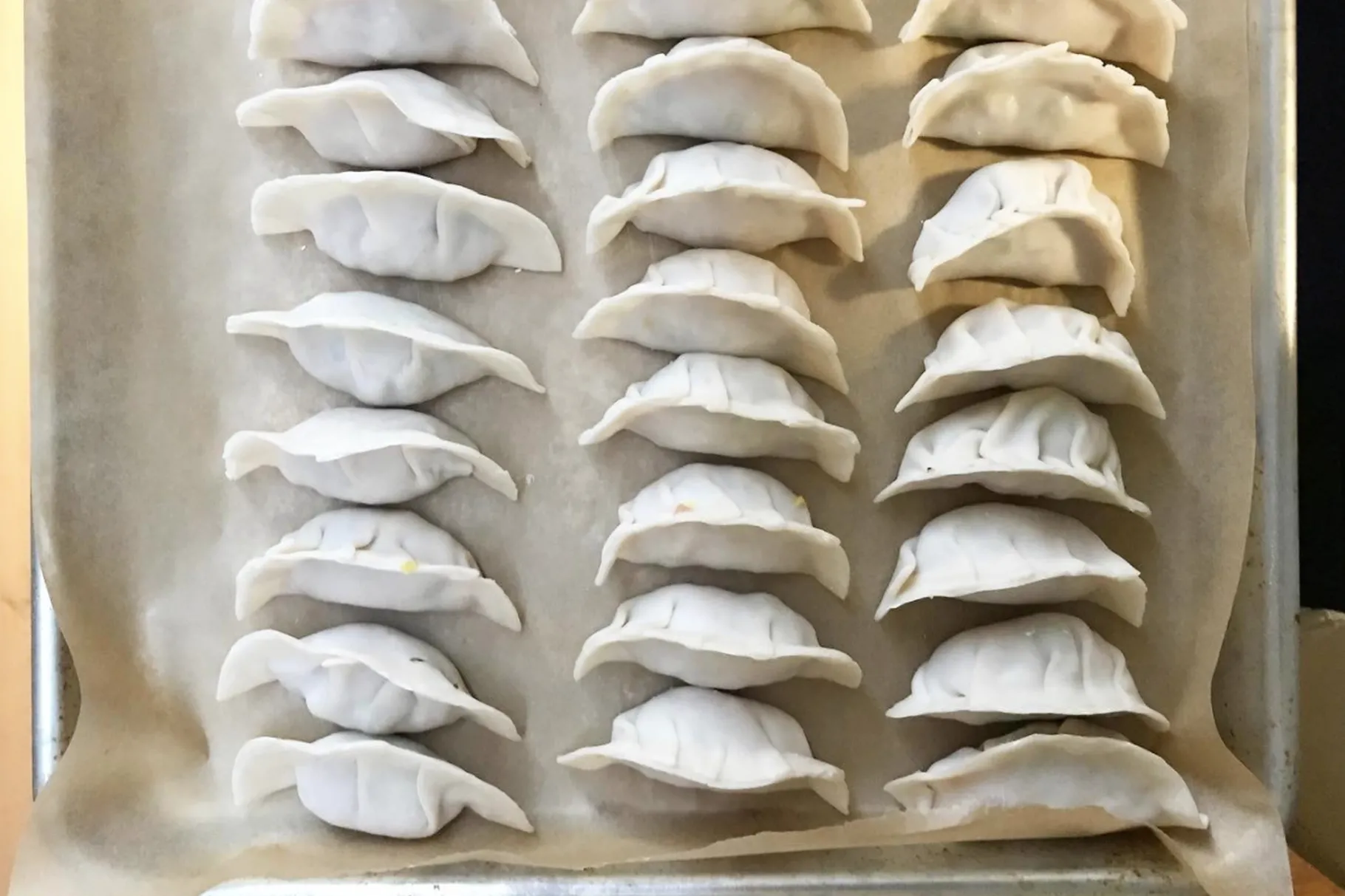
Photo by Becky Duffett
“Hold on,” says Sandy Zheng of Beijing Restaurant and United Dumplings. “I have to put my kids on Zoom.” The restaurant owner is at home in the Sunset with her husband, three kids, and from the sound of it, at least one small dog. Beijing Restaurant in Excelsior is still open, delivering its Northern Chinese specialties like hand-pulled noodles and cumin lamb. Unfortunately, in April of 2020, construction on the upcoming United Dumplings in Bernal Heights was supposed to open. Instead, it was put on indefinite hold, the neighborhood forced to wait for those rule-breaking dumplings, stuffed with Texas-style barbecue and Indian-inspired curry.
But at home, lunch is dumplings, plain and simple. “It’s a Chinese family thing,” says Zheng. “We’ve always made them at home. My kids think it’s very cool. Kind of like playing with Play Doh.” She says it’s no different from making dumplings at the restaurant, aside from keeping the filling simple with a classic combo of pork and cabbage. In fact, dumplings are surprisingly easy to make at home, and they’re a fun hands-on project to shape with kids. Plus, overwhelmed parents can make a double batch and stash them in the freezer to boil off for quick meals later.
Zheng’s friends often ask her for dumpling advice, and their number one question is where to find wrappers. Of course, they’re available at Asian markets and many grocery stores these days, and Zheng doesn’t care which brand you use, or whether you opt for thicker versus thinner skins. But of course, she makes her own. Zheng started making dumplings with her grandmother when she was two or three years old in Beijing and still relies on her family’s basic recipes. For the dough, she stirs together flour, an egg, and just enough water to make it soft enough to handle. Unlike with bouncy noodles, she doesn’t add any salt because she believes it toughens the dough, and she wants these skins to stay tender.
The dough rests for 15 minutes, plenty of time to mix up the filling. Which is a pound of ground pork and a cup of chopped Napa cabbage, salted and drained. Her family adds an egg, to keep things plump and juicy. The seasoning is the only step where she gets particular. No garlic. Two spoonfuls of minced green onion to one of ginger. A splash of Chinese cooking wine, and alternating drizzles of a neutral cooking oil and fragrant sesame oil. And both soy sauce and salt. “In my experience, too much soy can get a little sour, especially after freezing,” she advises.
If mixing the dough and the filling is as easy as dumping and stirring, actually shaping the dumplings only takes a pinch more patience. Zheng uses a dumpling rolling pin, easily replaced with a wiped-down beer bottle. Working on a dusted surface, the goal is to get the dough perfectly round, slightly thinner at the edges, and thicker at center. Drop a spoonful of filling in the center, and as for the shape? “Don’t worry about it!” she insists. No matter how you crimp, “It tastes exactly the same. It’s not a big deal at all.” She finds the easiest way for beginners is to just fold it over and pinch it hard, so when the dumpling hits hot water, it holds together. Dumpling pros can advance to adding in a few pleats and curving slightly. Like a crescent moon? “You know, like a dumpling,” Zheng corrects.
Bring a pot of water to a boil with a sprinkle of salt, which Zheng believes prevents the dumplings from sticking. Drop in the dumplings and stir them gingerly to help keep them free from the bottom. They’re done when they float to the top. “You can pick one out, and check the tummy part. Pinch the skin, and the wrapper should pull back,” says Zheng. “But it’s eight minutes. Just trust me.” Her kids refuse any dipping sauce whatsoever, and happily eat the dumplings just like that, while Zheng and her husband will lightly dip them in black vinegar. Only at the restaurant does she mix together soy sauce, vinegar, and sesame oil, and loosen it with a little water.